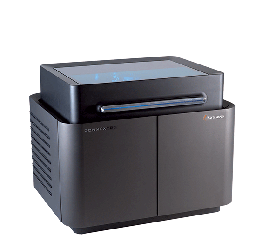In short, 3D printing is an additive production technique. It is a collection of techniques where the desired object is built up bit by bit in the desired material. It is a so-called additive technique, a technique in which the end result is achieved by adding material.
This makes 3D printing the exact opposite of traditional techniques that mainly work in machining. Think of fearing, drilling or chiseling. The use of the printer 3d happens to be essential there.
A good example of machining technology is of course the turning or milling machine. A (large) block of material is started from which material is removed until the end result is achieved.
Milling machine: Example of machining technology

Material is removed until the end result is achieved. Several techniques are available for 3D printing. FDM (also known as FFF), SLA (StereoLithography), and SLS (Selective Laser Sintering) and MultiJet are the best known. Techniques such as laser sintering require expensive equipment and high-quality raw materials. These techniques are also suitable for making metal objects, but because of the high costs they are mainly used for professional applications. Products made with this technique are extremely pricey and therefore hardly interesting for ordinary individuals.
The printer we use uses the most common technology and falls under the FDM printers. Such printers are especially interesting because of their low price and production costs.
How does an FDM (or FFF) 3D printer work?
FDM stands for Fused D position Method. This is also referred to by some manufacturers as FFF technology, where FFF stands for F used F armament Fabrication. Both abbreviations mean the same technique.
First of all, the 3D drawing of the object to be printed is converted into a print order. The model is then divided into horizontal layers, with the print file indicating exactly how the printer should construct the object. The material, called filament, is usually supplied as a long thread on a spool and is fed to the printhead by a motor. In the printhead, the material is heated to the desired temperature, after which the printhead literally places a line of molten material on the print bed. Thereby usually either the print head itself or the print bed moves. The material fuses with the other material, creating a whole.
Every time a complete layer is finished, the print bed drops slightly, after which the next layer can be printed.
Thickness
The thickness of the layers is called the ‘resolution’ of the printer. The thicker the layers, the rougher the appearance of the object will be. But also the faster a print will be ready. The width of a layer also plays a role. The narrower the ‘line’ that the print head can draw, the greater the detail of the print, but also the longer the printing will take.
In practice, we use three different resolutions, namely: 0.10 mm, 0.15 mm and 0.20 mm, or 100, 150 and 200 microns. Every vertical millimeter of an object is therefore made up of 5 to 10 thin layers of material.
Last Words
A print with a 100-micron resolution also takes about twice as long as the same print at a resolution of 200 microns. The print head (‘nozzle’) that we use almost exclusively has an opening of 0.4 mm. In rare cases, we use a 0.3-millimeter nozzle.


